
Roots
Every strand of textured hair holds a story, a delicate structure waiting to be understood and honored. The pursuit of deep, lasting moisture begins not with a product, but with a quiet contemplation of what hair truly is, at its most fundamental level. We look to the very origins of our strands, the way they are formed, and how their unique architecture interacts with the world around them, especially with the oils we choose to nourish them.

Hair’s Outer Shield ❉ The Cuticle
The outermost layer of each hair strand, the cuticle, acts as a protective shield. Composed of overlapping, scale-like cells, much like shingles on a roof, its condition directly influences how well moisture is retained and how effectively external agents, such as oils, can gain entry. When these scales lie flat and smooth, they create a formidable barrier, holding precious water inside.
Conversely, when they are raised or damaged, moisture escapes with greater ease, and the hair can feel rough or dry. This is where the concept of hair porosity becomes particularly relevant, describing hair’s ability to absorb and hold moisture.
The cuticle’s condition directly influences how well hair retains moisture and how effectively oils can enter its structure.
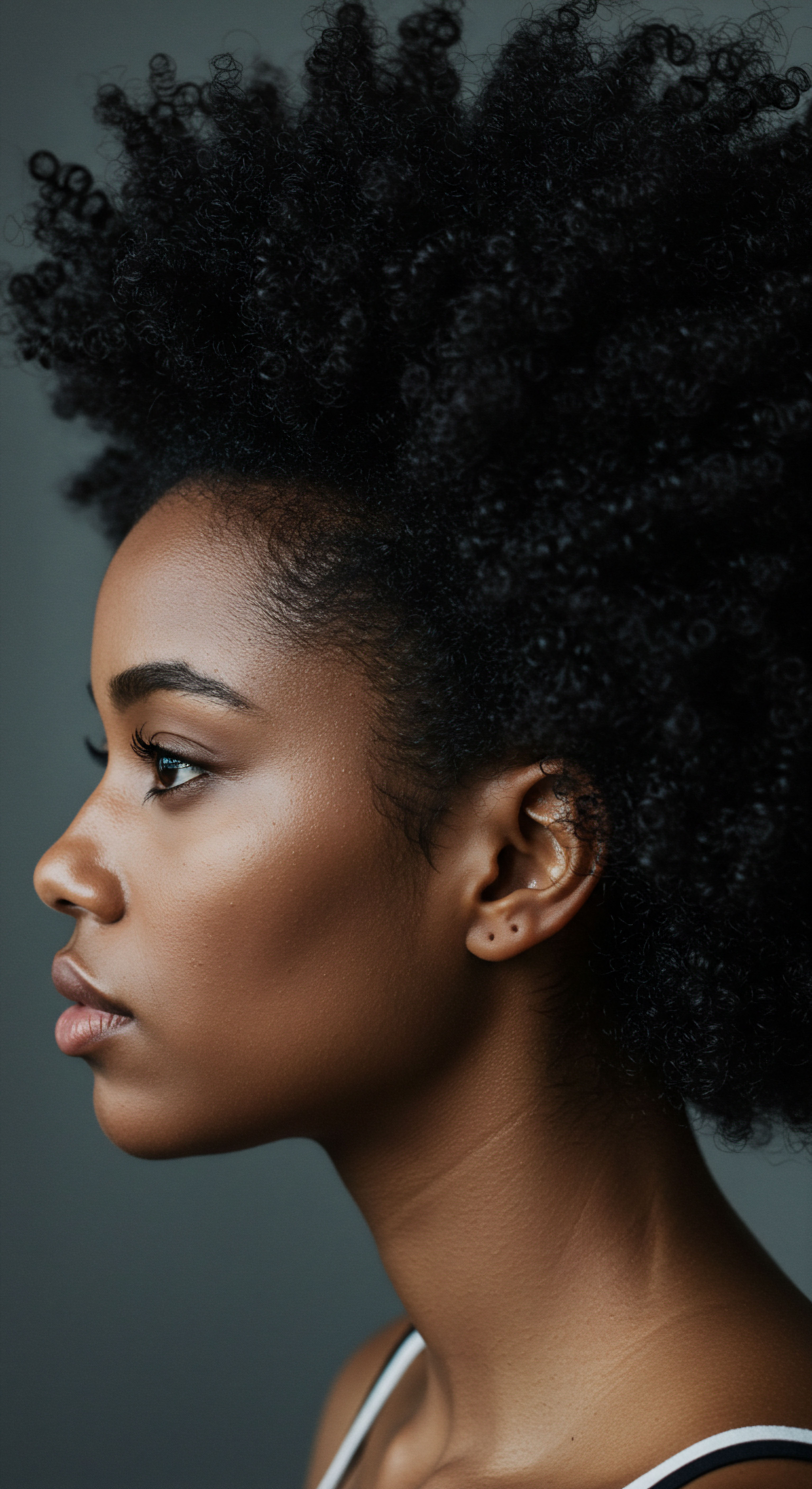
What Does Porosity Reveal About Hair’s Thirst?
Hair porosity is not a fixed state but a spectrum, influenced by genetics, chemical treatments, and environmental exposures. Low Porosity Hair possesses tightly bound cuticle layers, making it initially resistant to water and product absorption. Oils that are too heavy or large in molecular size may simply sit on the surface, leaving a greasy film without delivering moisture where it is most needed. For these strands, lighter, more readily absorbed oils are often favored.
In contrast, High Porosity Hair features raised or compromised cuticles, which allow moisture to enter quickly but also escape with similar speed. Such hair may feel dry soon after washing, needing oils that can truly seal and reinforce its structure. Understanding your hair’s unique porosity is akin to listening to its whispers, guiding your choices for genuine hydration.

The Inner Chamber ❉ The Cortex
Beneath the protective cuticle lies the cortex, the heart of the hair strand. This fibrous region comprises keratin proteins, giving hair its strength, elasticity, and color. For an oil to truly moisturize, it must reach this inner chamber, interacting with the protein structure and lipid components within. Oils that remain on the surface provide temporary sheen and a protective coating, but those that penetrate the cortex offer a deeper, more lasting form of nourishment, helping to maintain the hair’s suppleness and resilience.
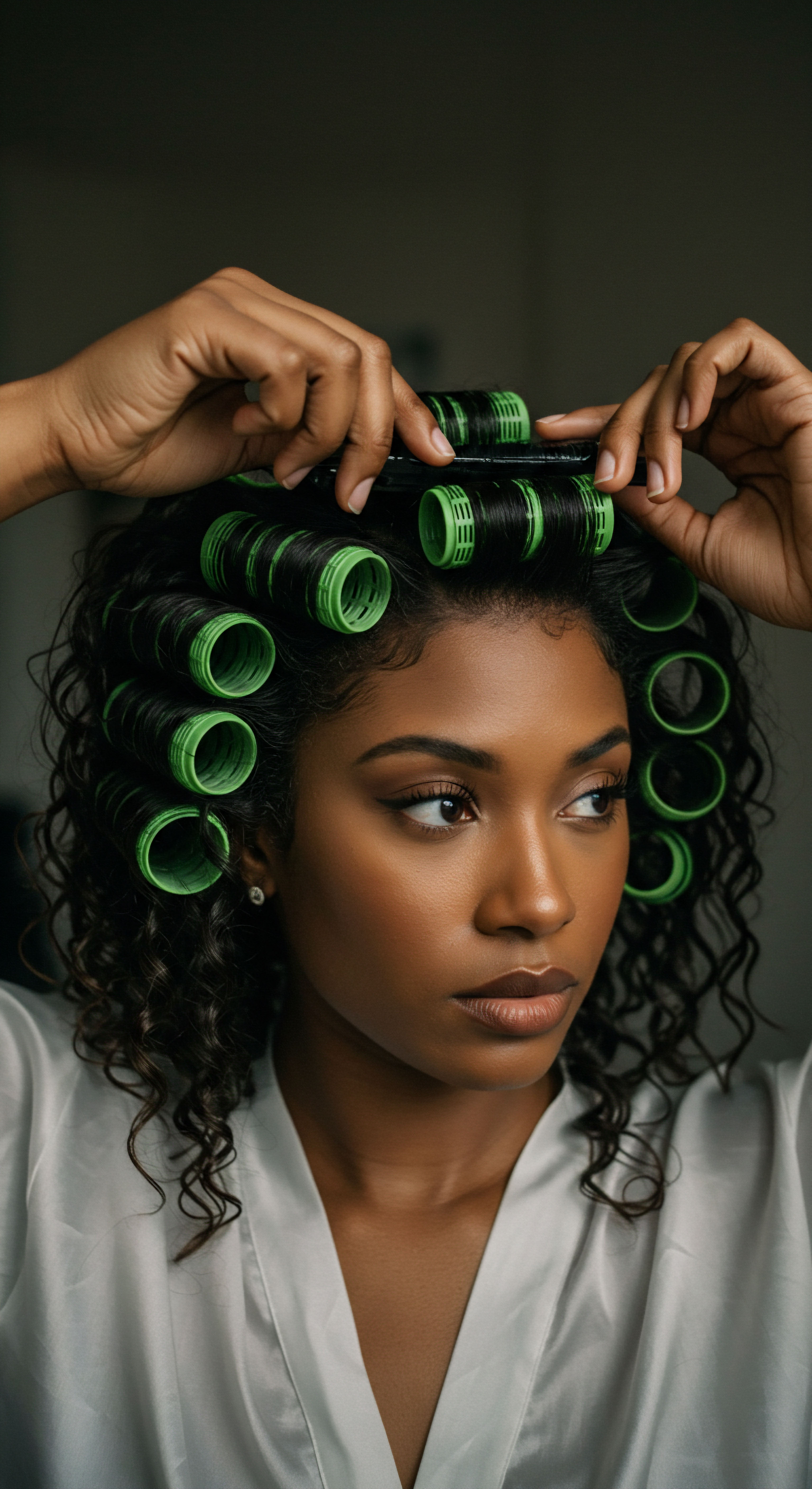
Hair’s Own Secretions and External Aid
Our scalps produce natural oils, known as sebum, which travel down the hair shaft, offering natural conditioning and protection. However, for textured hair, the coiled and curved structure of the strands can make it challenging for sebum to travel from root to tip, leaving the ends particularly vulnerable to dryness. This inherent characteristic means that external oils become not merely an indulgence but a necessary addition to a balanced hair care approach. These carefully chosen oils can supplement the scalp’s natural offerings, providing the hydration and protection that textured hair craves along its entire length.
| Porosity Type Low Porosity |
| Cuticle Condition Tightly closed |
| Moisture Behavior Resists water, prone to product buildup |
| Oil Type Preference Lighter, penetrating oils |
| Porosity Type Medium Porosity |
| Cuticle Condition Loosely aligned |
| Moisture Behavior Balances absorption and retention |
| Oil Type Preference Versatile, can use many oils |
| Porosity Type High Porosity |
| Cuticle Condition Raised or damaged |
| Moisture Behavior Absorbs quickly, loses quickly |
| Oil Type Preference Heavier, sealing oils with some penetration |
| Porosity Type Selecting oils based on porosity can enhance moisture absorption and retention. |

Ritual
With a deepened appreciation for the hair’s intrinsic structure, we now turn our attention to the purposeful application of oils. This transition from foundational knowledge to practical wisdom is where care transforms into a cherished practice, a rhythmic offering to the strands that grace our crowns. The mindful selection and thoughtful application of oils become a personal ritual, shaping the daily or weekly experience of hair health. It is here that we move beyond mere product use to a more intuitive connection with our hair’s desires.
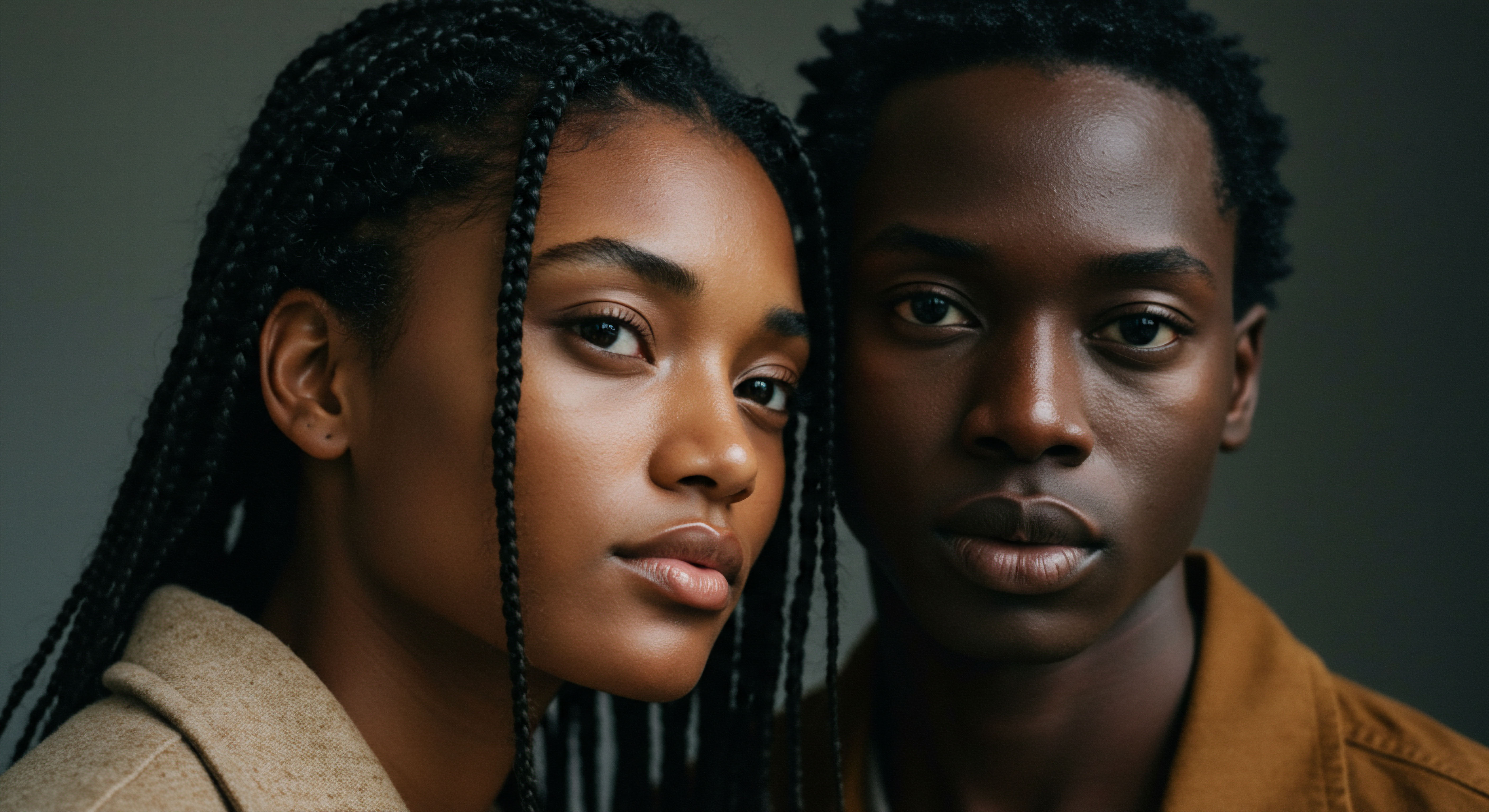
The Art of Selection ❉ Choosing a Penetrating Oil
The world of oils is vast and varied, each offering its unique touch. For textured hair seeking genuine moisture, the distinction between oils that penetrate and those that primarily seal the surface is quite important. Oils capable of permeating the hair shaft interact with the internal protein structure, providing a deeper form of conditioning. These are often characterized by their smaller molecular size and specific fatty acid compositions.
- Coconut Oil ❉ Renowned for its ability to reduce protein loss in both undamaged and damaged hair when used as a pre-wash and post-wash treatment. This unique capability is attributed to its composition, particularly Lauric Acid, which possesses a low molecular weight and a straight linear chain, allowing it to permeate the hair shaft with greater ease. Its affinity for hair proteins helps it integrate into the hair’s structure.
- Olive Oil ❉ A common kitchen staple, olive oil also demonstrates an ability to penetrate hair fibers, though perhaps not with the same depth as coconut oil. Its oleic acid content contributes to its conditioning properties, helping to soften and improve elasticity.
- Avocado Oil ❉ This oil is rich in oleic acid and monounsaturated fats. Studies indicate that avocado oil can penetrate the hair fiber, particularly into the cortex, providing a layer of moisture and helping to protect against damage.

Applying Oils for Deeper Conditioning
The method of application can significantly influence an oil’s effectiveness. For deeper conditioning, consider these practices:
- Pre-Poo Treatment ❉ Applying a penetrating oil, like Coconut Oil, to dry hair before shampooing can significantly reduce hygral fatigue—the swelling and shrinking of hair as it gets wet and dries. This helps shield the hair from the stripping effects of cleansing agents.
- Warm Oil Treatments ❉ Gently warming your chosen oil before application can enhance its ability to spread and potentially aid its passage into the hair shaft. This can be achieved by placing the oil container in a bowl of warm water, never directly heating the oil.
- Gentle Massage ❉ Work the oil through sections of your hair, paying special attention to the ends, which are often the oldest and driest parts. A gentle scalp massage with oil can also promote a feeling of well-being.
Warm oil treatments and pre-poo applications can enhance the effectiveness of penetrating oils for textured hair.

The Nighttime Sanctuary ❉ Essential Sleep Protection
The hours of rest offer a precious opportunity for hair to recuperate and absorb nourishment without disturbance. Incorporating oils into your nighttime ritual creates a sanctuary for your strands, guarding against friction and moisture loss. A light coating of a penetrating oil before bedtime can help seal in moisture from your daytime routine, working its way into the hair while you sleep.

Why Nighttime Care Matters for Textured Hair?
Textured hair, with its unique structure, is particularly prone to tangling and breakage during sleep. Tossing and turning on cotton pillowcases can create friction, leading to frizz and damaged cuticles. The deliberate application of oils as part of a nightly routine, coupled with protective styling, forms a vital defense. This thoughtful attention allows oils more time to settle into the hair, providing continuous conditioning.
- Satin or Silk Protection ❉ Sleeping on Satin or Silk Pillowcases or wearing a Satin Bonnet creates a smooth surface, drastically reducing friction compared to cotton. This preserves the hair’s cuticle layer, allowing oils to remain on the hair rather than being absorbed by the fabric.
- Protective Styles ❉ Braids, twists, or a simple pineapple bun can keep hair contained and minimize movement, further safeguarding against tangles and mechanical damage during sleep.
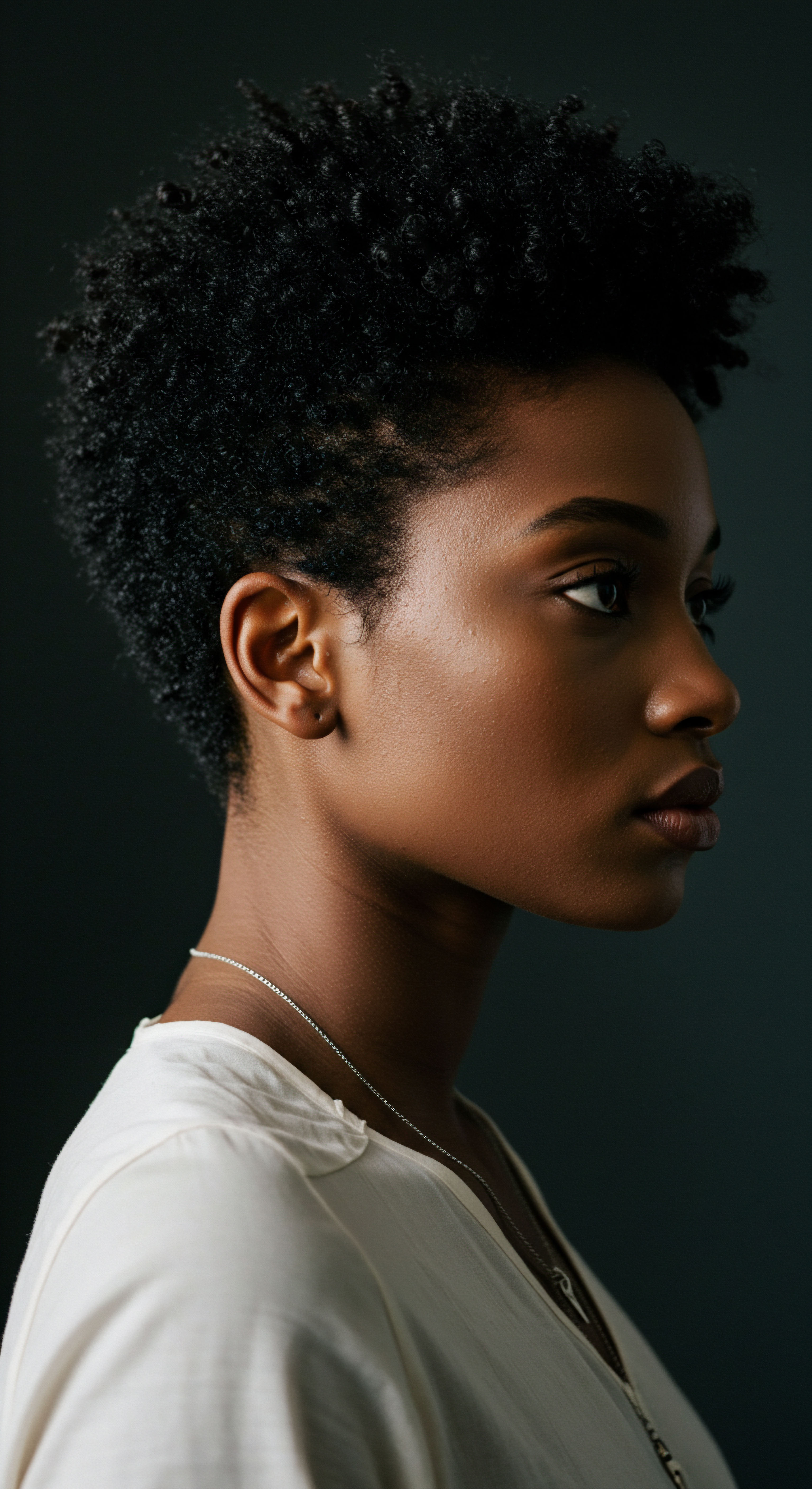
When Less Is More ❉ Avoiding Overload
While oils are beneficial, there is a delicate balance to strike. Applying too much oil, particularly heavier varieties, can lead to product buildup, weighing down strands, and making hair feel greasy rather than moisturized. This can also hinder the hair’s ability to breathe and absorb other beneficial ingredients.
The goal is to nourish, not to suffocate. A light hand, consistent application, and observing how your hair responds will guide you toward the ideal amount for your unique strands.

Relay
As we move deeper into the understanding of oils and textured hair, we acknowledge that this conversation extends beyond simple application. It touches upon historical practices, the precise mechanisms of molecular interaction, and even the subtle environmental influences that shape our hair’s response. This section aims to connect these threads, providing a more comprehensive outlook that honors both ancient wisdom and modern scientific discovery, all while maintaining a gentle, insightful perspective.

Beyond the Bottle ❉ Ancestral Wisdom and Oils
The use of oils for hair care is not a recent discovery; it is a practice steeped in centuries of tradition across various cultures, particularly within communities with rich histories of textured hair care. Long before scientific laboratories dissected fatty acid chains, generations passed down knowledge of plant oils, recognizing their ability to condition, protect, and enhance hair’s natural beauty. From the use of coconut oil in South Asian and African traditions to olive oil in Mediterranean cultures, these practices speak to an intuitive understanding of hair’s needs. These traditions remind us that hair care is often more than just a routine; it is a connection to heritage, a continuation of practices that have sustained and celebrated hair through time.
Hair oiling is a practice with deep cultural roots, connecting us to ancestral wisdom and a long history of hair care.

Scientific Scrutiny ❉ Oil Absorption Mechanisms
Modern science now helps us comprehend the specific ways oils interact with hair. The ability of an oil to penetrate the hair shaft depends on several factors, including its molecular size, its chemical structure (particularly the length and saturation of its fatty acid chains), and its affinity for hair’s keratin proteins. Smaller, saturated fatty acids, like those found in coconut oil, are more likely to pass through the cuticle and integrate with the hair’s internal structure.
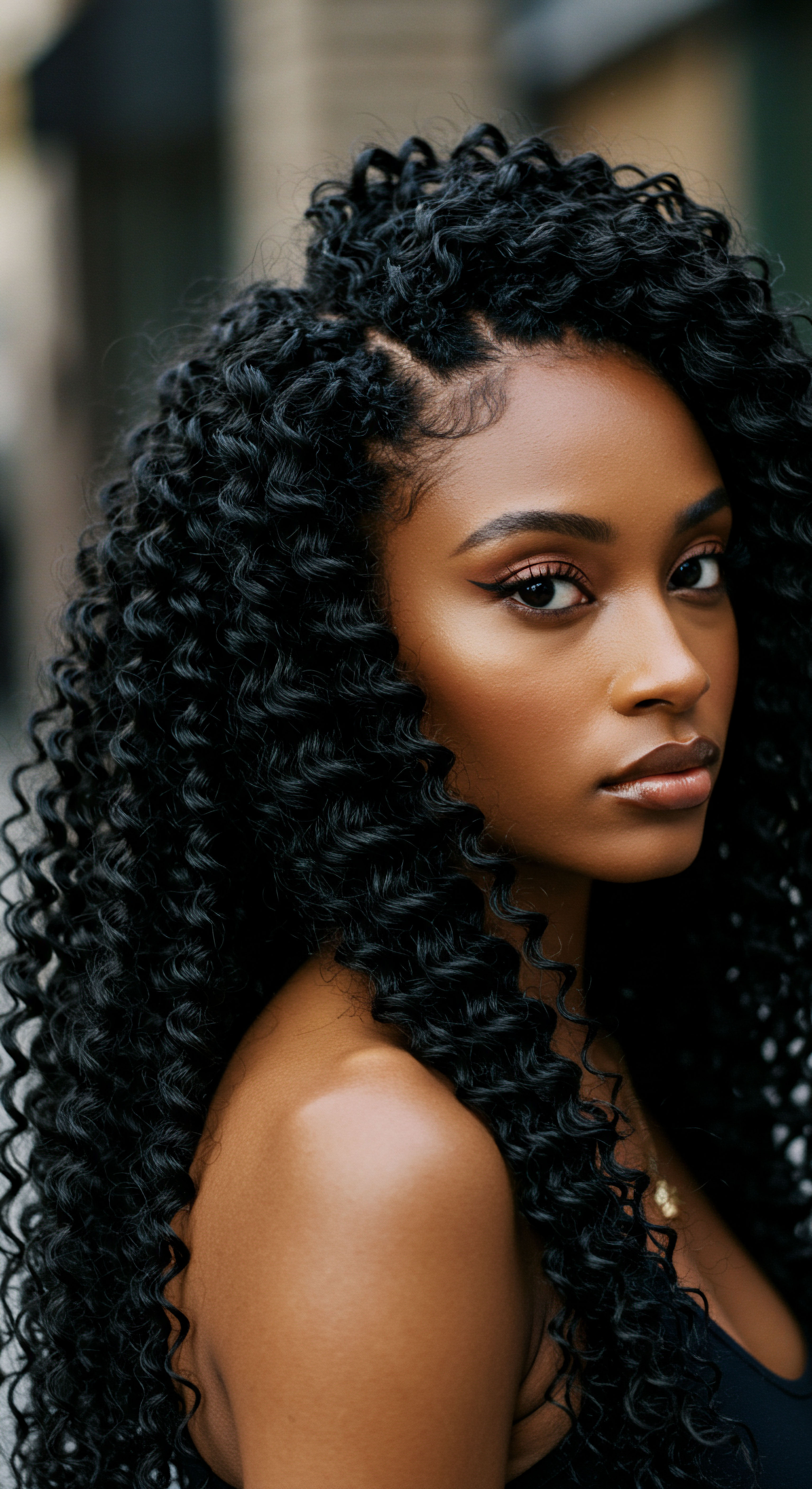
Do Oils Affect Hair Strength Uniformly?
While the benefits of certain oils for hair health are widely appreciated, their impact can vary significantly depending on the hair’s condition. For instance, a 2024 study published in the journal Cosmetics investigated the penetration and impact of oils, including coconut, avocado, and argan, on both virgin and bleached textured hair. The research found that while these oils did penetrate hair fibers, their effects on hair strength were not uniform. In virgin hair, coconut and avocado oils improved fatigue resistance, suggesting a lubricating effect that helped strands withstand repeated stress.
However, the study presented a less commonly discussed observation ❉ in bleached textured hair, the presence of these oils appeared to contribute to a reduction in fatigue resistance, rather than an improvement. This intriguing finding prompts a deeper consideration of how chemical treatments alter hair’s structure and its subsequent interaction with conditioning agents, suggesting that a one-size-fits-all approach to oil application may not always be optimal, particularly for chemically altered strands. This highlights the ongoing conversation within hair science, where new discoveries continually refine our understanding of hair’s complex biology.
| Oil Type Coconut Oil |
| Primary Fatty Acid Lauric Acid (saturated, short chain) |
| Penetration Characteristics High affinity for keratin, penetrates deeply into cortex. |
| Observed Effects on Hair Reduces protein loss in damaged and undamaged hair. Improves fatigue resistance in virgin hair. |
| Oil Type Olive Oil |
| Primary Fatty Acid Oleic Acid (monounsaturated) |
| Penetration Characteristics Penetrates, but perhaps less deeply than coconut oil. |
| Observed Effects on Hair Conditions hair, can reduce capillary adhesion. |
| Oil Type Avocado Oil |
| Primary Fatty Acid Oleic Acid (monounsaturated) |
| Penetration Characteristics Penetrates into the hair cortex. |
| Observed Effects on Hair Moisturizes, improves fatigue resistance in virgin hair. |
| Oil Type Mineral Oil |
| Primary Fatty Acid Hydrocarbons (non-polar) |
| Penetration Characteristics Does not penetrate hair shaft. |
| Observed Effects on Hair Primarily surface coating, no protein loss reduction. |
| Oil Type Different oils interact with hair in distinct ways, influencing their effectiveness for deep moisture. |
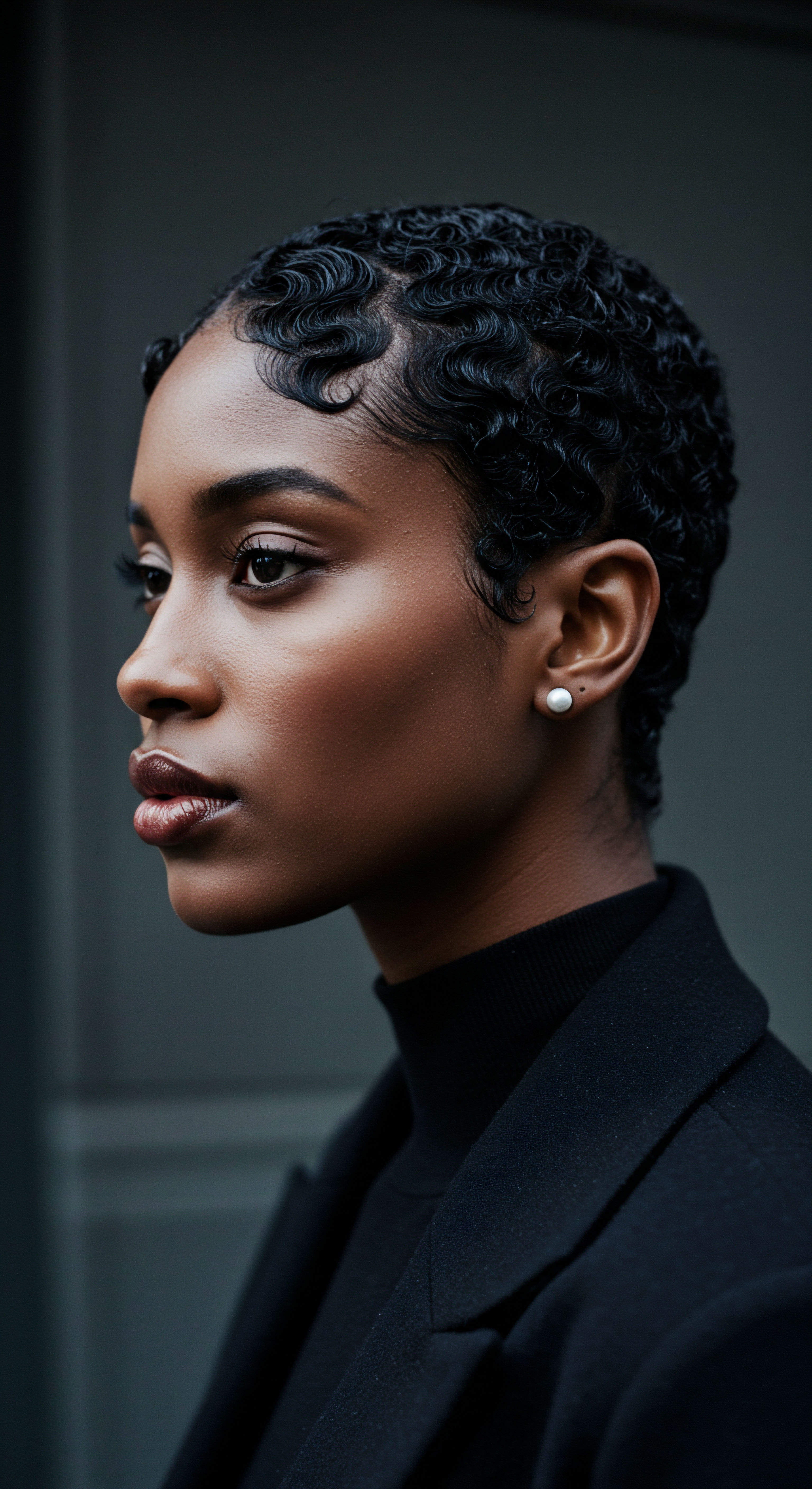
The Microscopic Dance ❉ Hair’s Interaction with Lipids
At a microscopic level, the interaction between oils and hair is a dynamic exchange. Hair fibers possess a lipid-rich cell membrane complex (CMC) that plays a vital role in hair integrity and moisture balance. Studies utilizing advanced techniques, such as NanoSIMS, have confirmed that triglycerides from plant oils can partition into this lipid-rich CMC, interacting with the fatty acids that form its structure.
This integration helps to prevent the formation or propagation of flaws within the CMC, contributing to the hair’s overall resilience. It is a delicate, intricate dance where external oils become a supportive partner to hair’s internal components.

Environmental Influences on Oil Effectiveness
The efficacy of oils is not solely dependent on their molecular composition or how they are applied; environmental factors also play a part. Humidity, for example, can affect how hair absorbs and retains moisture, influencing the performance of oils. In very humid conditions, hair might feel more weighed down by heavier oils, while in dry climates, richer oils might be needed to provide sufficient protection against moisture evaporation.
The surrounding temperature can also affect an oil’s viscosity and how easily it spreads. Recognizing these external influences allows for a more adaptive and responsive approach to hair care, adjusting your oil choices and application methods as seasons and environments shift.

Reflection
Our exploration into which oils best penetrate textured hair for moisture reveals a landscape rich with scientific understanding, historical wisdom, and deeply personal experiences. It is a reminder that the journey to healthy, vibrant hair is not a destination but an ongoing conversation, a continuous process of learning and listening to what our unique strands truly desire. The gentle application of oils, chosen with care and intention, becomes a profound act of self-connection, a quiet celebration of our hair’s inherent beauty and resilience. As the sun sets on our current contemplation, we carry forward the knowledge that each strand holds endless possibilities, waiting to be nourished, understood, and admired in its authentic glory.
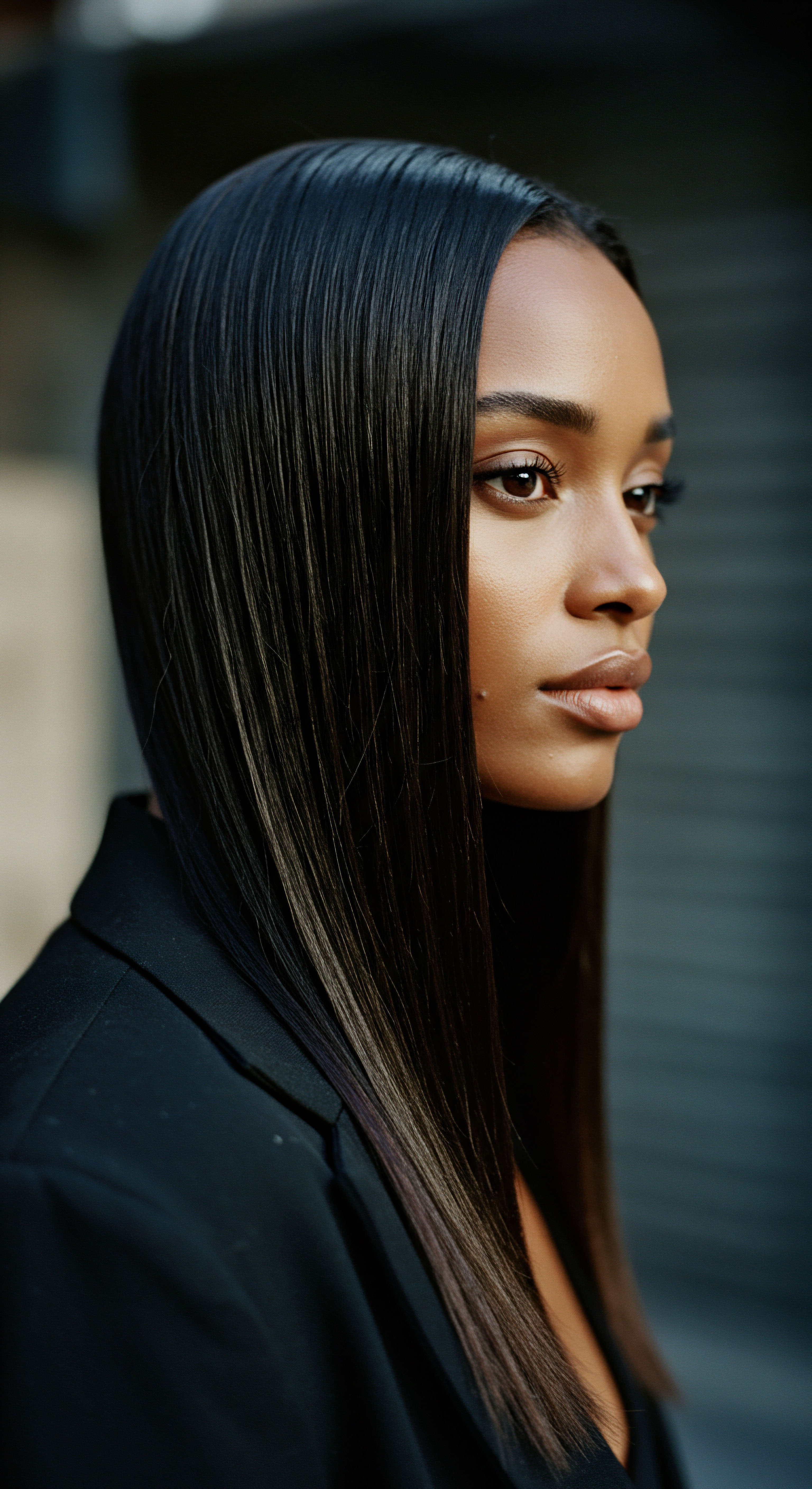
References
- Keis, K. Persaud, D. Kamath, Y. K. & Rele, A. S. (2005). Investigation of penetration abilities of various oils into human hair fibers. Journal of Cosmetic Science, 56(5), 283-295.
- Rele, A. S. & Mohile, R. B. (2003). Effect of mineral oil, sunflower oil, and coconut oil on prevention of hair damage. Journal of Cosmetic Science, 54(2), 175-192.
- Hornby, S. B. Appa, Y. Ruetsch, S. & Kamath, Y. (2005). Mapping penetration of cosmetic compounds into hair fibers using time‐of‐flight secondary ion mass spectrometry (TOF‐SIMS). International Journal of Cosmetic Science, 27(5), 299-299.
- Gopinath, H. & Devi, P. M. (2018). Oil penetration study of hair using LSCM. ResearchGate.
- Ruetsch, S. B. Kamath, Y. K. & Rele, A. S. (2005). The effect of various oils on the capillary adhesion between hair fibers. Journal of Cosmetic Science, 56(5), 283-295.
- Shetty, P. K. et al. (2018). Premature Greying of Hair and Role of Oiling in Indian perspective. International Journal of Current Research in Medical Sciences, 4(2), 86-92.
- Dias, M. F. R. G. (2015). Hair Cosmetics ❉ An Overview. International Journal of Trichology, 7(1), 2-15.
- Kaushik, V. et al. (2022). Damage repair benefit, as measured by reduced protein loss, and reduced colour loss by penetrated coconut oil. ResearchGate.
- Sidney, B. et al. (2004). Mapping Penetration of Cosmetic Compounds into Hair Fibers Using Time-Of-Flight Secondary Ion Mass Spectrometry. 23rd IFSCC Congress, Orlando, Florida, USA.
- Yebga, C. (2015). Physicochemical and rheological characterizations of Cocos nucifera L. and Elaeis guineensis Jacq. (Arecaceae) oils for black hair. Journal of Chemical and Pharmaceutical Research, 7(10), 101-107.
- Loh, S. P. et al. (2024). Impact of Hair Damage on the Penetration Profile of Coconut, Avocado, and Argan Oils into Caucasian Hair Fibers. Cosmetics, 11(2), 47.
- Park, Y. et al. (2021). Hair protecting effect of avocado oil on human hair keratinocytes. Journal of the Society of Cosmetic Scientists of Korea, 47(1), 77-84.